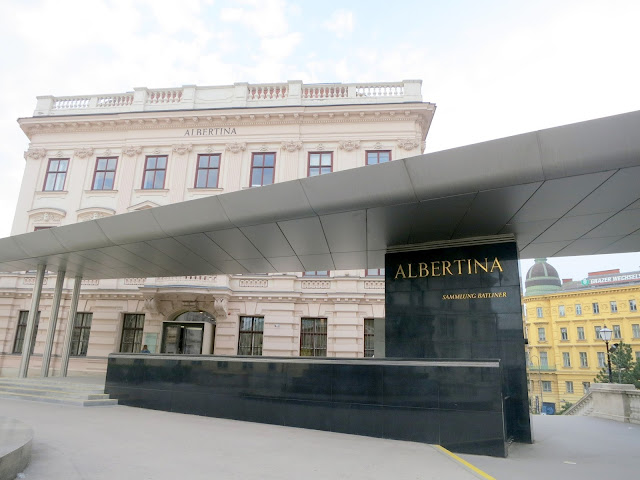A few gems from the Albertina, Vienna.
Natan Altman, Portrait of the Poet Anna Akhmatova, 1914
Natan Altman, Petrocommune, 1921
I had never come across Altman's work before and am extremely pleased to have discovered him. Only seven years separate the two works above, yet stylistically and in their worldview and ideology they are worlds apart. It is almost as if they were not by the same hand, as if they dated from different centuries: in one, the elegant, bourgeois 19th century, and in the other, the century that swept away three centuries of tsarist rule. Taking the place of the elegant fin-de-siècle realism is the Suprematist construction, permeated by propaganda for the state of the future.
Whereas he presents himself as a classical portraitist adopting the techniques of Cubo-Futurism with his
Portrait of the Poet Anna Akhmatova, he demonstrates themes and an artistic language consistent with the new era in his work from the early 1920s. In
Petrocommune there is a concentration of images and ideas connected with a single concept: the formation of a new state. The use of the elements of the circle and the rectangle is his tribute to Suprematism, proclaimed by Malevich in the 1910s.
Natan Altman, Portrait of a Young Jew (Self-Portrait), 1916
In the search of forms of new expression, experiments with new materials, and the discovery of new artistic media during those revolutionary times, did not affect the artists' interest in such traditional genres as the portrait. What had changed was the use of unusual materials and their completely novel combination. In this sculpture Altman teamed plaster and copper with wood.
Beatrice Sandomirskaya, Composite Portrait, 1929
Sandomirskaya created a sculpture in the spirit of Cubism, with the head reduced to a few geometric shapes juxtaposing contrasting surface textures of sheet metal and wood.
Wladimir Lebedew, Cubism: Washerwoman, 1922
Kasimir Malewitsch, Portrait of the Artist's Wife, 1933







No comments:
Post a Comment